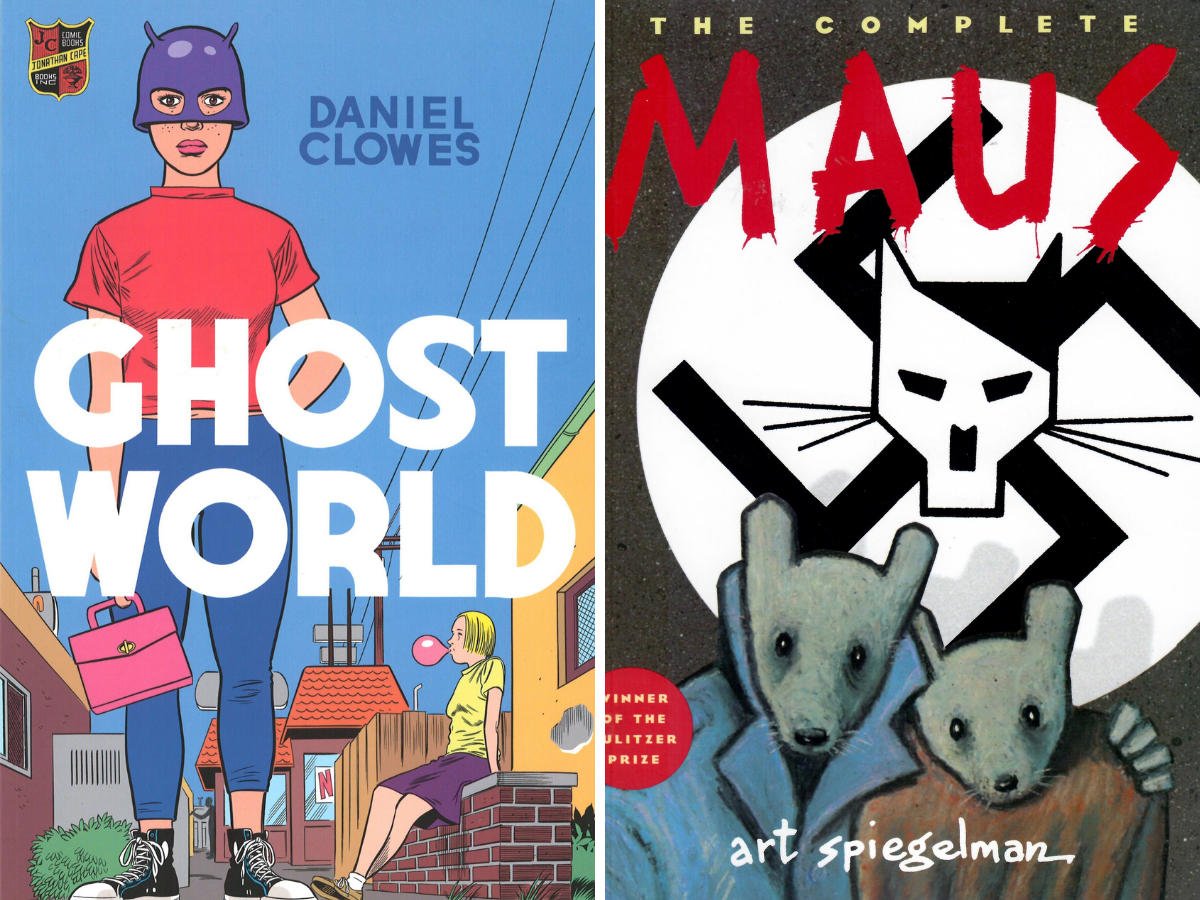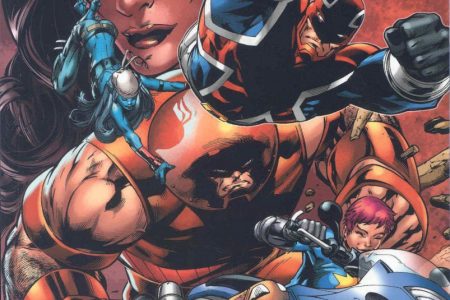Ghost World by Daniel Clowes
Clowes is a darling of the critical comic literati and the serious end of the comic blogosphere. I hadn’t sampled any of his work prior to this graphic novel, apart from seeing the film based on this work. Much like my view of the film, I enjoyed the world created and the performances, but I wasn’t transfixed by it or came away with the feeling that I had encountered genius.
Following the lives of two teenage girls in America, Clowes creates a totally believable world of strangeness and captures the characters of Enid and Rebecca with their genuine-sounding dialogue. However, I never felt that I wanted to know more about these characters, fully realised as they are, nor the other people who invade their world. Much like my reading of Jimmy Corrigan, I could admire the artistry but not enjoy the story. A case of a sensibility that doesn’t match my own.
Maus by Art Spiegelman
When you finally get round to reading a Pulitzer-prize winning graphic novel, it can feel a little daunting. There is a certain weight of expectation that hangs around it, with that haunting cover looking up at you. In this case, it is merited, as this is an exceptionally powerful read that resonates during and long afterwards.
It took me a while to get around to reading this, as I didn’t want to read something so ‘heavy’ and potentially depressing. That’s not the type of material I read for enjoyment. Similarly, I saw Schindler’s List, was amazed by it, but never need to see it again because of the impact it had on me. I’m glad I did read Maus, as it was a rewarding experience.
Maus, as most people reading a comic blog know, is about Art Spiegelman relating the experiences of his father, Vladek, a Polish Jew who survived the Nazi concentration camps, as did his mother, who committed suicide when Art was a young man. It is told using the artistic device of portraying Jews as mice, Nazis as cats and Poles as pigs. This was used to help the story be told, as it would have been more harrowing with human figures. Artistically, it took me a while to acclimatise to the grimy style employed by Spiegelman, as it muddies the storytelling at times; however, it is appropriate for the tale, and the inherent humanity of the story soon means that you don’t notice it.
The exploits of Vladek are remarkable, showing the way he survived and how others didn’t, including a large proportion of the family. Equally vivid is the relationship portrayed in the book between Spiegelman and his father, as they argue during the process of taking down his story. This book is harrowing, moving, distressing and beautiful, and demonstrates the scope of the medium. I won’t need to read it again, but I would recommend it whole-heartedly.




